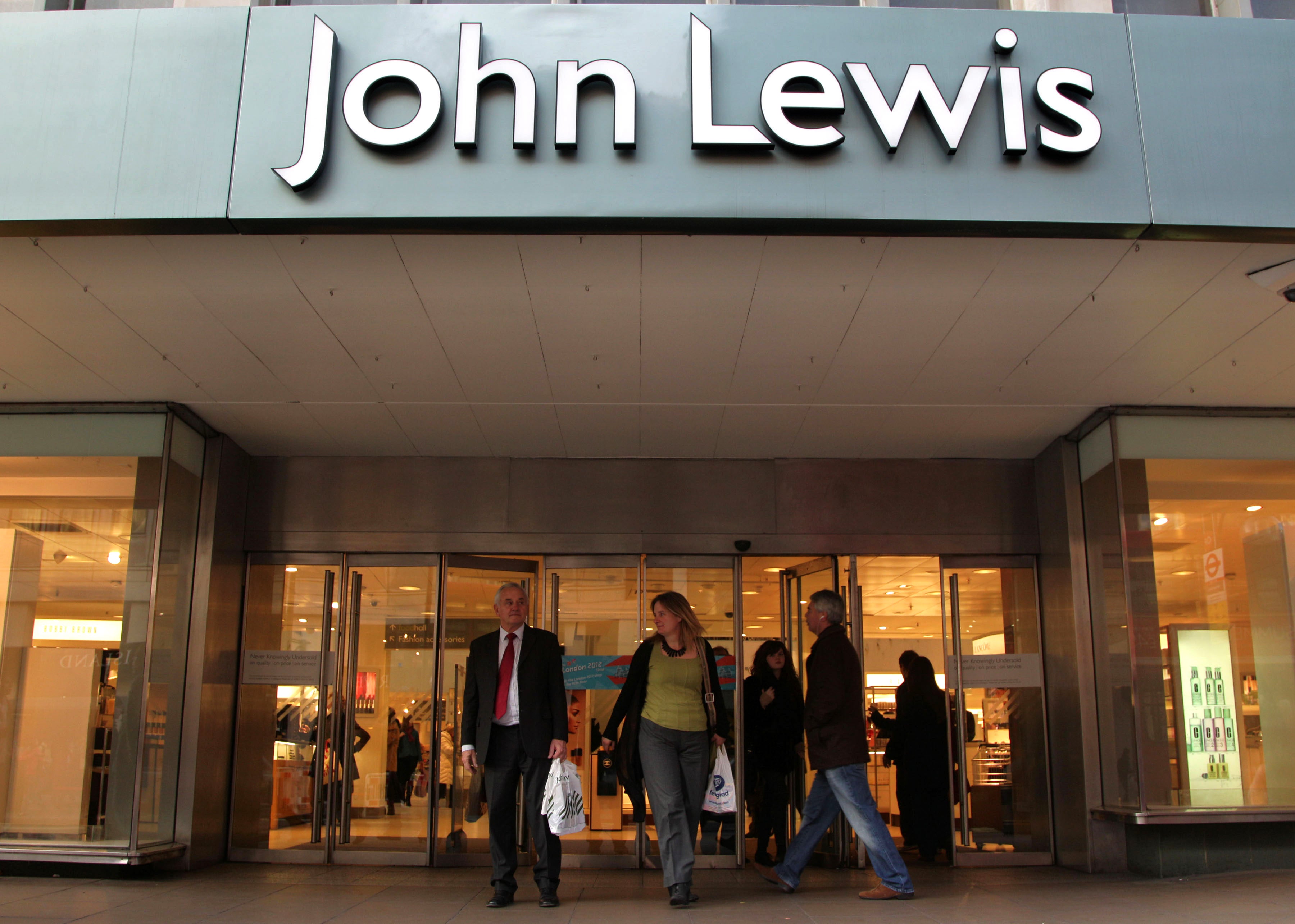John Lewis restores staff bonus but warns of price hike over pressures
The retail giant reported underlying pre-tax profits rising 38% to £181m in the year to January 29.

Your support helps us to tell the story
From reproductive rights to climate change to Big Tech, The Independent is on the ground when the story is developing. Whether it's investigating the financials of Elon Musk's pro-Trump PAC or producing our latest documentary, 'The A Word', which shines a light on the American women fighting for reproductive rights, we know how important it is to parse out the facts from the messaging.
At such a critical moment in US history, we need reporters on the ground. Your donation allows us to keep sending journalists to speak to both sides of the story.
The Independent is trusted by Americans across the entire political spectrum. And unlike many other quality news outlets, we choose not to lock Americans out of our reporting and analysis with paywalls. We believe quality journalism should be available to everyone, paid for by those who can afford it.
Your support makes all the difference.The John Lewis Partnership has restored its annual bonus and unveiled a pay rise for its near 80,000-strong workforce, but warned of price hikes amid “significant” cost pressures.
Staff at the retail giant, which also owns upmarket supermarket chain Waitrose, will share a £46 million bonus pot after the retail giant saw underlying annual profits rebound by 38%.
The group will pay a bonus of 3% – or one-and-a-half weeks’ wages – to its employees in April and raise salaries by 2% on top of its pledge to pay the real living wage as it acknowledged the squeeze from the cost of living crisis.
It marks the return of payouts after it was forced to scrap last year’s staff bonus for the first time since 1953.
The bonus cheer came as the group reported underlying pre-tax profits rising to £181 million in the year to January 29 thanks to a record £4.9 billion sales haul at the department stores, up 8% on a like-for-like basis.
Chairwoman Dame Sharon White hailed a “good start” to the group’s five-year overhaul, but warned of “uncertainties” amid the Ukraine conflict and rising inflation, with prices having to increase in some areas.
Speaking to the PA news agency, she said the group is facing “significant persistent pressures” on costs.
She said: “As far as we can, we’re trying to absorb the cost pressures… not all of these pressures are absorbable.”
“The cost of living pressures are real – real for our partners and customers and we’re doing everything we can in our power to try to limit the impact.”
Results were also buoyed by the John Lewis Partnership slashing costs by £170 million, closing a raft of stores and cutting jobs.
It remained in the red on a bottom-line basis, though losses narrowed sharply to £26 million from £517 million the previous year, when it posted its first annual loss after the pandemic battered outlets.
While the John Lewis department store saw profits rise by 37% to £758 million, Waitrose earnings dropped by 11% to £1 billion as it faced surging costs within supply chains due to staff absences in the pandemic and higher online trade.
Waitrose chief James Bailey said the supermarket brand was witnessing inflation of between 3% and 3.5% across its stock.
He said the business had made “small price increases” in some areas but had also swallowed cost increases in an effort to support customers amid the cost of living crisis.
In July, the employee-owned business revealed plans to cut 1,000 jobs, having already said it would axe around 1,465 roles as part of last year’s store closures.
The group recently ditched its “Never Knowingly Undersold” promise to customers to focus on its Anyday value ranges instead.
It has also said it will remove any products made in Russia from Waitrose and John Lewis in response to the conflict, including Russian vodka, some barbecue products and some duvets.
Richard Lim, chief executive officer of Retail Economics, said: “Significant obstacles face the business as ongoing challenges from the pandemic collide with a cost of living crisis.
“While the least affluent households will be under the most intense pressure, the shock to living standards will reverberate far and wide as consumers cut back discretionary purchases and trade down to cheaper alternatives.
“As recessionary behaviours kick in, the retailer will be hoping that a wider array of products through their Anyday ranges attract new customer segments without risking diluting their brand.”